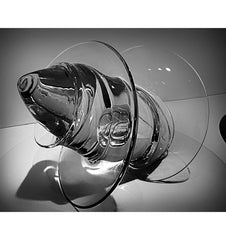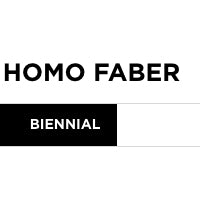
Born in Venice on 29 May 1887 from Antonio and Giacomina Trevisan, he owes a well-deserved fame to the experience of a glass entrepreneur in Murano.
It was a short but intense experience not only for the high level of production of his firm, but also for the stimulating function that his intervention had on the Murano glass environment, which at the time was not very open to novelties.Cappellin's successful entry into the glass world was due to his meeting with the Murano painter Vittorio Zecchin , who had already tried his hand as a glass designer in the previous decade, and the young Milanese Paolo Venini , a law graduate and eager to test his entrepreneurial skills . The well-known Murano glass artist Andrea Rioda was also to be part of the group as technical director, but he died in August 1921, while the company Cappellin Venini & C. was founded in December of the same year.
Cappellin Venini & C. took over the furnace of Andrea Rioda with part of the masters ( Giovanni Seguso "Patare" , Diego Barovier , Raffaele Ferro , Attilio Moratto , Malvino Pavanello ), known for their skill, and successfully presented himself at the 1st International Exhibition of the Monza decorative arts of 1923, proposing a renewed glass art thanks to a return to Renaissance essentiality and lightness and a refusal of the nineteenth-century decorations that still reigned, with linear blown colors with slight shades of color. Some models were inspired by types reproduced in 16th century paintings, such as the "Veronese" vase (from the Annunciation of the Academy) and the "Holbein" (from the Portrait of the merchant Georg Gisze at the Kaiser Friederich Museum in Berlin); others, although based on the same criteria of purity, with a new design, such as the elegant biansata cup or Libellula ", of which a perfect example of the time is preserved at the Vittoriale degli Italiani (Gardone). Soon other glassworks followed Cappellin and Venini on this road.
At the grandiose Exposition internationale des arts décoratifs, held in Paris in 1925, the Cappellin presented himself separate from Paolo Venini with the Murano glass masters Cappellin & C. Vittorio Zecchin remained with him as artistic director, developing his research on thin blown parts and adopting to sometimes refined techniques, such as filigree. It was replaced between 1927 and 1928 by the young Carlo Scarpa , the well-known designer and architect who had supervised the restoration of the new Cappellin's glass factory, the Gothic Da Mula palace in Murano.
Already then sensitive to the finesse of the artisan techniques, but less tied to the Murano tradition, Carlo Scarpa, while not neglecting the transparent blown glass, introduced opaque glasses with refined colors and modern decorations, sprayed with gold or silver, into the production. In 1930, for the Venice Biennale and the Monza Triennale he prepared "lattiginosi e aurati" and "neri e argentati" glasses which were widely approved by critics.
The production of Cappellin (between 1925 and 1931 some glasses bear the acronym " MVM Cappellin & C. Murano " imprinted on acid) was always characterized by exceptional technical accuracy. Perhaps the severe selection of the pieces, the high production costs together with the extreme refinement of the style restricted the potential clientele. To all this must be added the prodigality of the entrepreneur, who caused economic difficulties (the masters sold their share in 1929) and the cessation of the glassworks activity in 1931. While Scarpa continued with satisfaction his activity in the glass field at Venini , Cappellin abandoned Murano.
Shortly after the bankruptcy of the Murano company, Cappellin moved to Paris, where he opened an atelier in which a dozen French workers modeled artistic bottles by lamp for the most famous perfume manufacturers, such as Arden and Schiaparelli.
After years of success, the company ceased badly after the end of the Second World War and the C. had judicial aftermath.
Back in Italy, he worked for a short period in the Richard Ginori shop in Naples, was then hosted by friends in Florence and then received in a rest home for artists in Forlì.
However, he preferred to return to his Venice, where he spent the last decade modestly, thanks to the help of friends and relatives.
The Cappellin died in Venice on November 14th. 1968.



